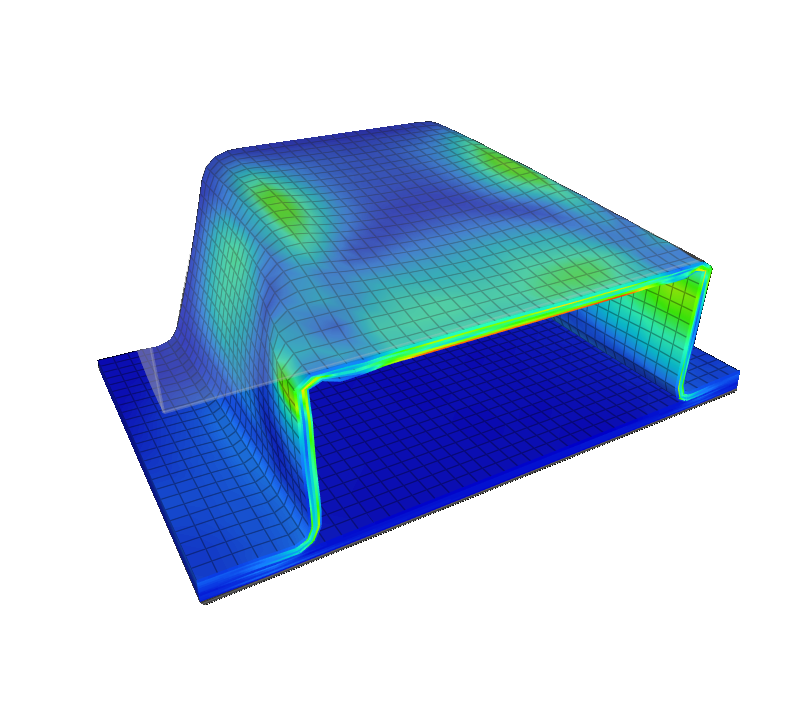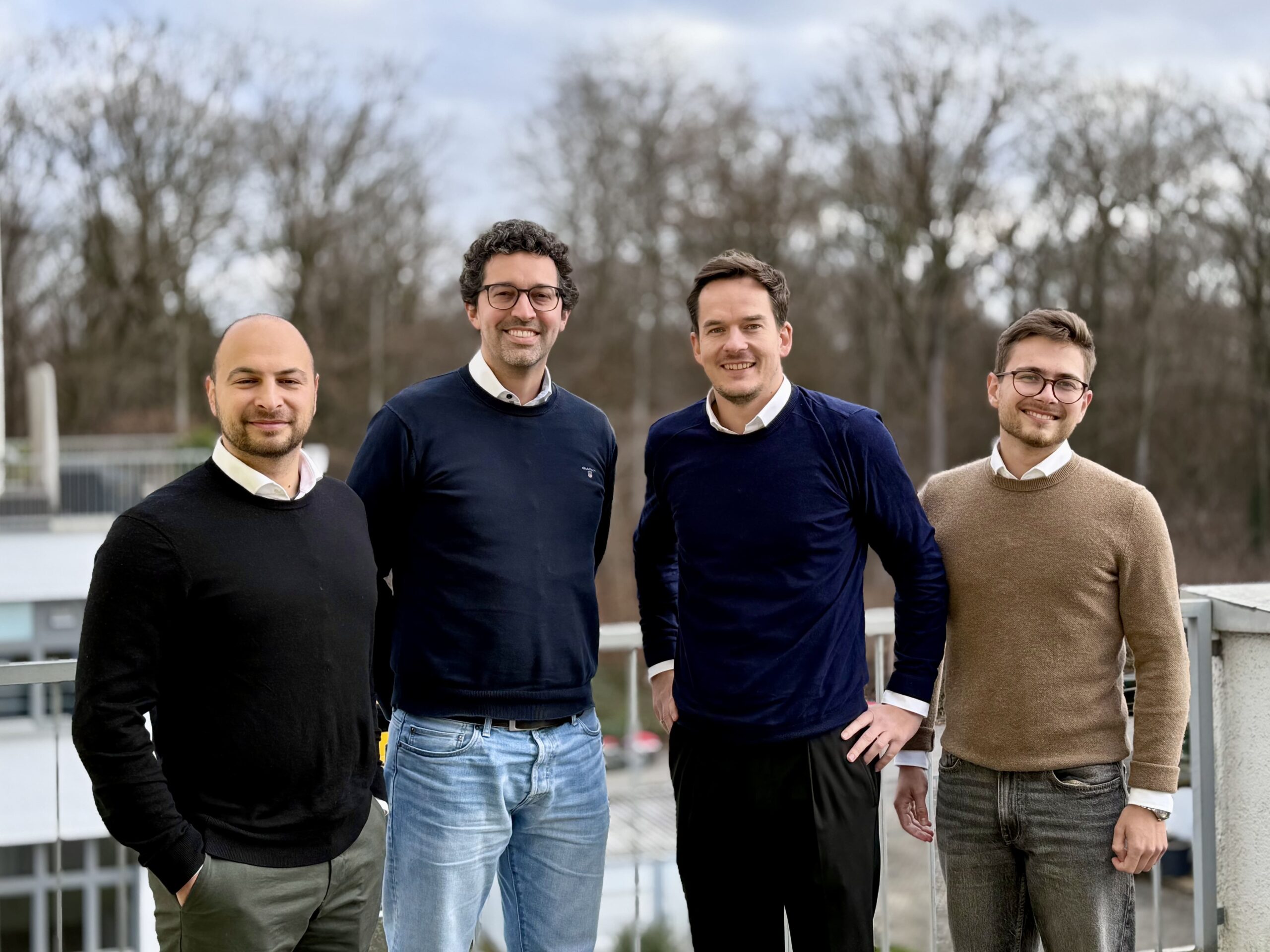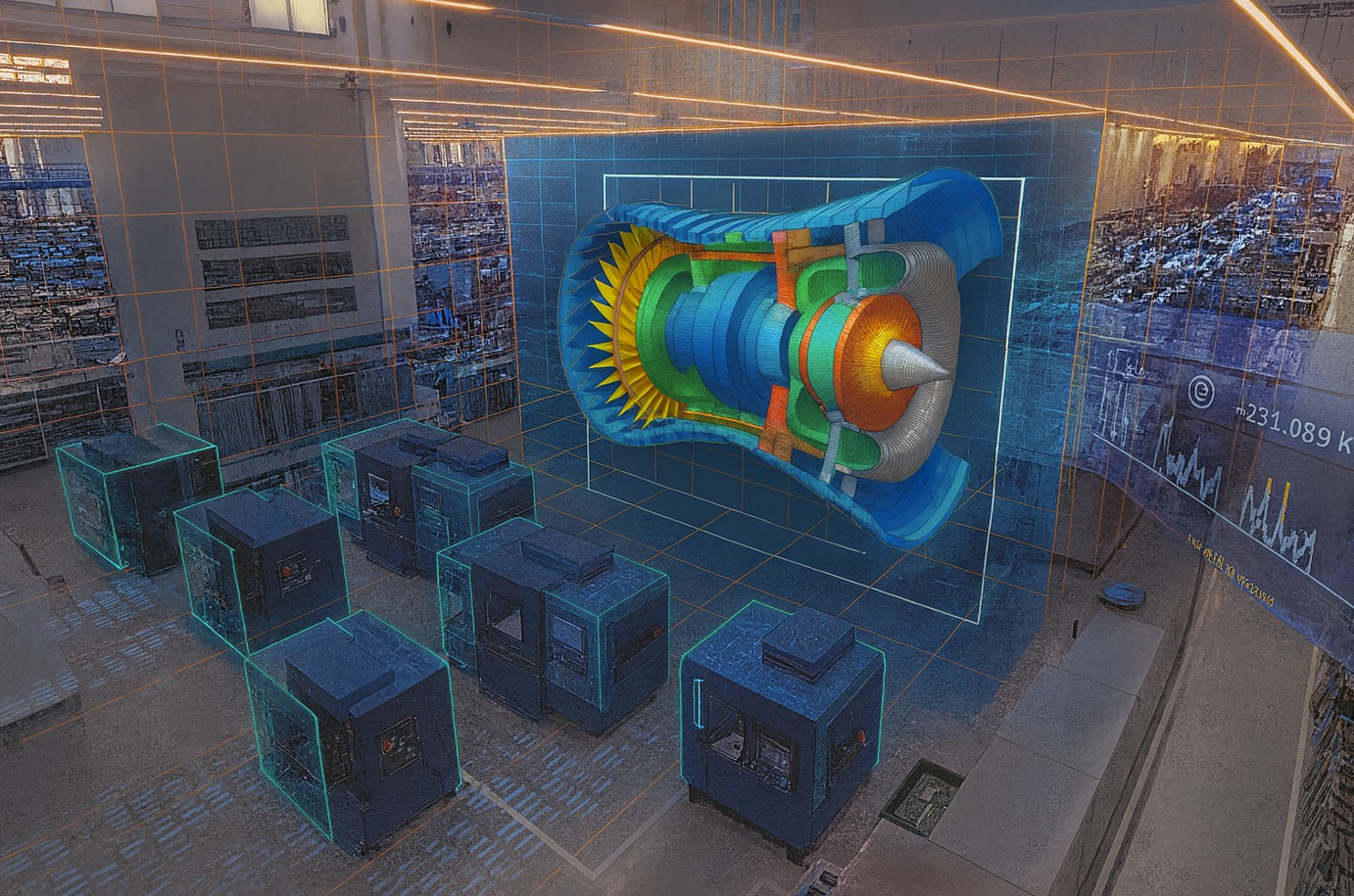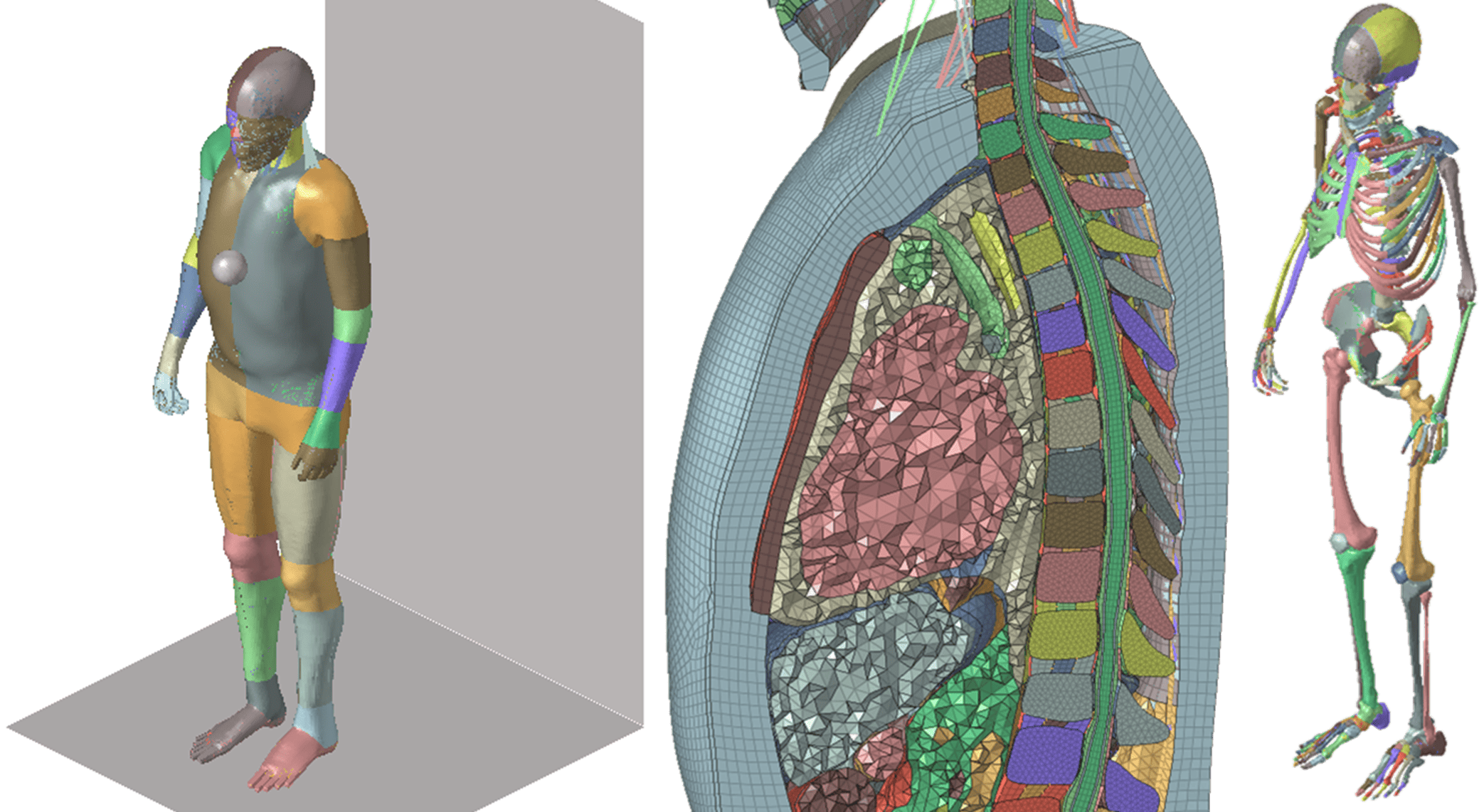Dynamic Structural Simulation in Brief
Crash and impact simulation is a specialized area of finite element analysis (FEA) focused on predicting how structures and materials behave under sudden, high-energy loads. Unlike static strength analysis, crash simulations capture large deformations, material failure, and energy absorption during impacts. These engineering simulations are essential in industries where safety, compliance, and lightweight design are critical — from automotive crashworthiness to aerospace impact resistance and defense applications.
FiniteNow.com provides Crash and Impact Simulation Services with instant quoting, scalable engineering teams, and cost-efficient delivery. With a network of pre-audited FEA specialists, our consulting services support projects ranging from vehicle crash testing to ballistic protection. By combining accuracy, speed, and technical expertise, FiniteNow delivers reliable simulation-driven insights that reduce physical testing and accelerate product development.
Goals and Targets in Crash and Impact FEA
The primary goal of crash and impact simulation is to replicate real-world collision events in a virtual environment using finite element methods. Typical engineering targets include:
- Crashworthiness validation – predicting vehicle structural response and energy absorption during collisions.
- Impact resistance evaluation – assessing whether products or packaging can withstand drops or impacts.
- Occupant safety prediction – simulating human body response with crash dummies or biomechanical models.
- Compliance testing – meeting regulatory crash and safety standards without excessive physical prototypes.
- Design optimization – improving material usage and reducing weight while ensuring safety margins.
Crash and impact FEA services help engineers understand not just whether a product survives an impact, but how it behaves during the entire crash event.
Core Modeling Dimensions in Crash and Impact Simulation
Most crash and impact simulations are highly nonlinear, involving large deformations, material plasticity, and contact interactions. Linear models are limited to preliminary screening but fail to capture progressive failure or energy dissipation. Nonlinear finite element simulation ensures accurate predictions of collapse, fracture, and energy absorption. Our consulting projects typically combine nonlinear crash FEA with experimental calibration for reliability.
Crash and impact events occur within milliseconds, making time-domain simulation essential. Explicit solvers model the dynamic response during short-duration impacts, while implicit solvers may be used for slower impact scenarios. Time-resolved crash FEA provides engineers with load histories, energy transfer curves, and deformation profiles critical for safety assessment.
Explicit solvers dominate crash simulation due to their ability to handle complex contact and high-speed events without convergence issues. However, implicit solvers are often used for quasi-static impacts or preloading conditions. Advanced engineering teams combine implicit pre-stress simulations with explicit crash events for more realistic results.
Material models in crash analysis must include plasticity, strain rate dependence, and failure criteria. Metals require strain rate-sensitive constitutive laws, composites demand progressive damage modeling, and foams are modeled for crushability. Accurate material calibration is a cornerstone of professional crash simulation consulting.
Simplified shell elements may be sufficient for global crash models, but detailed 3D solid meshes are required for local impact zones. Submodeling allows engineers to run efficient global crash simulations while refining critical regions with higher fidelity. Geometry simplification and mesh strategy directly affect both solver time, cost and result accuracy.
Crash events often involve coupled physical phenomena such as thermal effects (explosions), fluid–structure interaction (airbags, water impacts), or biomechanical responses (occupants). Multiphysics FEA simulation services integrate these domains to provide a holistic safety evaluation.
Traditional crash FEA uses deterministic input parameters, but probabilistic crash simulation accounts for variability in material properties, manufacturing tolerances, and loading conditions. This probabilistic approach provides engineers with confidence intervals for crashworthiness instead of a single value.
1D crash models (lumped mass) are sometimes used for concept evaluation, 2D shell models for vehicle body structures, and 3D solid models for detailed impact zones. Advanced engineering projects frequently combine multiple scales to balance computational efficiency with predictive accuracy.
While time-domain explicit FEA is the standard, frequency-domain analysis supports vibration and modal safety evaluations. Engineers may combine modal analysis with crash simulations to predict resonance effects during impact. This hybrid approach helps optimize occupant protection and structural stability.
Crash simulations generate massive datasets, making automation essential. Automated simulation workflows allow parameter studies across crash speeds, impact angles, and materials. Optimization integrates crashworthiness targets with weight reduction goals, enabling engineering teams to design lighter, safer structures.
Solver stability is a frequent challenge in crash FEA due to short time steps and high deformation rates. Strategies include mass scaling, adaptive time stepping, and parallel computing. Senior analysts carefully balance solver performance with result accuracy to deliver reliable crash predictions.
Continuum FEA models deformation and plasticity, while discrete element or particle methods are used when fragmentation or debris is important (e.g., ballistic impact). Hybrid continuum–discrete crash simulations provide realistic predictions in cases where structures fracture into multiple pieces.
Typical Mistakes in Crash Simulation and How to Avoid Them
A common mistake is oversimplifying contact definitions, which leads to unrealistic force transfer during impacts. Another frequent error is neglecting strain-rate effects in materials, underestimating energy absorption capacity. Poor mesh strategy, such as overly coarse shell models, can suppress critical failure mechanisms.
Avoiding these pitfalls requires validated material models, refined meshes in impact zones, and careful solver parameter tuning. Partnering with professional simulation services like FiniteNow.com ensures best practices are applied consistently by experienced consultants.
Use Cases of Crash and Impact Simulation
Automotive Crashworthiness Engineering
Vehicle crash simulations predict structural deformation and occupant safety during frontal, side, and rollover crashes. FEA-based crash services allow automakers to meet global safety standards while reducing physical crash tests. Consulting-driven optimization balances lightweight design with safety compliance.
Consumer Product Drop and Impact Testing
Electronics, packaging, and consumer goods are tested virtually for drop and impact resistance. Crash FEA services predict failure modes in plastics, metals, and composites, helping manufacturers reduce warranty claims. Virtual testing accelerates design cycles and lowers prototyping costs.
Aerospace and Defense Ballistic Safety
Aircraft fuselages, space modules, and armored vehicles must withstand ballistic and explosive impacts. Crash and impact FEA with advanced material failure models helps engineers design for survivability. Consulting services integrate multiphysics effects like blast waves and fragment impact.
Learn more about our portfolio of Dynamic Simulation Services
FAQ – Crash and Impact Simulation with FEA Services
It is a finite element analysis (FEA) method that predicts how structures behave under sudden loads such as collisions, drops, or explosions. These simulations help engineers design safer, more durable products. Beginners often use them to understand structural energy absorption and crashworthiness basics.
Physical tests are costly and limited in scope. Crash FEA allows engineers to evaluate multiple crash scenarios virtually, saving time and development cost. By combining both, companies reduce the number of prototypes needed and achieve faster, more informed design decisions.
Automotive, aerospace, defense, and consumer electronics all rely heavily on impact simulation. Each industry faces unique safety requirements, making crash FEA a universal tool for design validation. Engineering consulting firms often specialize in tailoring crash simulations to each sector.
Explicit solvers handle large deformations, nonlinear contact, and high-speed impacts without the convergence problems of implicit solvers. They allow realistic modeling of crash events down to millisecond resolution. Engineers with several years’ experience rely on them for most crash and impact FEA services.
Extremely important – materials behave differently under high-speed loading than under static conditions. Ignoring strain-rate sensitivity can result in unsafe designs. Experienced simulation engineers calibrate material models with dynamic test data to improve prediction accuracy.
Fine mesh in critical impact regions is necessary to capture localized plasticity and fracture. Coarse meshes may reduce computation time but miss important damage mechanisms. Intermediate engineers balance mesh refinement with computational efficiency using submodeling techniques.
Experts use finite element human body models or crash dummies with joint and tissue-level detail. These simulations provide data on injury risk, not just structural deformation. This integration is essential for advanced occupant safety consulting projects.
Experts simulate fluid-structure interactions for airbags, blast waves, or water impacts. Coupling crash FEA with CFD and thermal solvers allows realistic prediction of multiphysics crash events. This advanced capability is crucial for aerospace and defense consulting projects.
Instead of relying on a single crash scenario, probabilistic FEA simulates many variations in material properties, impact angles, and loading conditions. Experts use this to generate safety confidence intervals for certification. This level of analysis is increasingly required in aerospace and automotive approvals.
FiniteNow.com offers instant quoting, enabling companies to launch crash FEA projects without procurement delays. Its network of pre-audited simulation providers ensures consistent quality and technical depth. Cost competitiveness and scalable engineering teams make it a leading crash simulation service partner.
By combining experienced consultants with standardized workflows, FiniteNow delivers accurate and validated results. Projects are reviewed by domain experts in automotive crashworthiness, ballistic protection, and biomechanics. This ensures each client receives a tailored and reliable simulation service.
Yes – whether it’s a single drop-test simulation or a multi-year automotive crash program, FiniteNow scales resources accordingly. Clients benefit from both speed and flexibility, with consulting services available for specific subprojects or end-to-end crashworthiness validation.
Start Now! It will only take 12 minutes
It has never been faster, easier and more cost effective to get a quotation for your structural simulation needs:
Looking for more details and background about Dynamic Modelleling in Simulation?
Practical Modelling of Dynamic Events in FEA
The Textbook Section
Introduction
Few areas of finite element analysis (FEA) are as demanding – or as societally important – as crash and impact simulation. Unlike static strength evaluations or linear vibration analyses, crash and impact events are highly nonlinear, dynamic, and often violent. They involve large deformations, complex contact interactions, material fracture, and sometimes multiphysics effects such as fluid–structure interaction or explosive loading.
For industries such as automotive, aerospace, defense, and consumer products, crash and impact simulations are not just academic exercises. They directly affect safety certification, regulatory compliance, and ultimately the protection of human life. Whether analyzing how a vehicle absorbs energy in a frontal crash, how an electronic device survives a drop, or how a ballistic vest responds to a high-speed projectile, the goal is the same: predict performance in extreme events and design structures that manage those events safely.
Mechanics Background of Crash and Impact
At the heart of crash and impact simulation lies nonlinear dynamics. Unlike static or quasi-static loading, impact events involve high strain rates, large plastic deformations, and transient wave propagation. The governing mechanics are described by Newton’s second law in dynamic form:
where M, C, and K are the mass, damping, and stiffness matrices, and u(t) is the displacement vector. In crash and impact, inertia terms dominate, and energy balance between kinetic energy, strain energy, and plastic dissipation becomes critical.
Strain-rate sensitivity is another key phenomenon. Materials behave differently when deformed rapidly. Metals exhibit higher yield strength at high strain rates, composites show complex rate-dependent failure, and foams or rubbers may stiffen significantly. This is why accurate material models – such as Johnson–Cook plasticity, rate-dependent viscoelasticity, or progressive composite damage – are indispensable for crash FEA.
Contact and fragmentation further complicate matters. In a vehicle crash, hundreds of parts interact, sometimes separating, sliding, or fracturing. In ballistic impact, a projectile may penetrate, erode, or shatter, while debris interacts with the target. Capturing these phenomena requires advanced contact algorithms and explicit time integration, which are the hallmark of crash and impact simulation codes such as LS-DYNA, PAM-CRASH, Abaqus/Explicit, and Radioss.
Vehicle Crashworthiness Simulation
One of the largest and most mature applications of crash simulation is in automotive engineering. Vehicle crashworthiness is assessed through regulatory crash tests such as NCAP frontal and side impacts, pole tests, and rollover evaluations. Traditionally, such tests required expensive prototypes and extensive physical testing. With FEA, much of this evaluation can now be done virtually.
Crashworthiness simulation involves building a full vehicle FE model, often with millions of elements, representing the body-in-white, trims, seats, restraints, and dummies. Explicit solvers simulate the event in milliseconds of real time, capturing how energy is absorbed through controlled crumpling of structural members.
Key design goals include:
- Energy absorption: front and rear crumple zones should deform in a controlled manner, dissipating energy before it reaches the passenger cell.
- Intrusion resistance: the occupant compartment must remain intact, with minimal intrusion from pedals, dashboard, or side structures.
- Restraint interaction: seatbelts, airbags, and seats must work in concert with structural deformation to protect occupants.
In practice, crashworthiness FEA is an iterative process. Early models guide structural layout and stiffness tuning. Later, refined models include detailed welds, adhesives, and material thicknesses. Ultimately, virtual crash tests can reduce the number of physical prototypes, shorten development cycles, and improve safety outcomes.
Drop and Impact Simulation
Not all impact simulations involve vehicles. Consumer electronics, aerospace hardware, and industrial equipment must all survive drops, tool impacts, and accidental collisions.
Drop simulations often use explicit dynamics, but at smaller scales than automotive crashes. A smartphone, for example, may be analyzed under multiple drop orientations onto concrete, steel, or carpeted floors. The challenge is to capture local stress waves that can fracture glass screens or solder joints. In aerospace, satellite components are analyzed for impact survivability during handling, launch vibrations, and orbital debris collisions.
Guidelines for drop and impact simulation include:
- Model contact surfaces realistically – concrete behaves very differently from foam padding.
- Include strain-rate dependent material models for polymers and composites.
- Pay close attention to mesh density in areas of expected fracture initiation, such as sharp corners or interfaces.
- Consider multiple impact orientations, since failures often occur in the “worst-case” orientation not predicted by intuition.
Ballistic and Explosion Simulations
Ballistic and blast simulations represent some of the most extreme impact scenarios. They combine very high strain rates, shock wave propagation, and often material fragmentation or erosion.
In ballistic impact, such as a bullet striking armor, both the projectile and target undergo large deformations, with possible penetration or ricochet. Material models must include strain-rate sensitivity, thermal softening, and failure criteria. Advanced FE solvers allow projectiles to erode element-by-element upon impact, while targets can delaminate, crack, or fragment.
Explosion simulations add further complexity, involving coupled fluid–structure interaction. A detonation generates a pressure wave that interacts with surrounding structures. FEA may be combined with computational fluid dynamics (CFD) solvers, or simplified blast load functions may be applied directly to structures. Key applications include evaluating building facades for blast resistance, assessing military vehicles against IEDs, and studying containment vessels.
Occupant Safety and Biomechanics
Ultimately, crash and impact simulations are not only about structures – they are about people. Occupant safety and biomechanics are integral to modern crashworthiness evaluation.
In automotive safety, anthropomorphic test devices (ATDs, or “crash dummies”) are widely used. Their FE models replicate the mass distribution, joint stiffness, and response of the human body. Advanced simulations now use human body models (HBMs) that represent anatomy in detail, including bones, muscles, and soft tissues. These models allow injury prediction at a level impossible with dummies alone.
Biomechanics simulations extend beyond automotive. They are used in sports equipment design (helmets, pads), aerospace crew safety, and even medical device evaluation. FEA enables engineers to assess head injury criteria (HIC), chest deflection, neck loads, and bone fracture risk under impact. By combining structural crash models with occupant models, engineers can evaluate not just whether a car structure survives, but whether the people inside walk away safely.
Practical Guidelines for Crash and Impact FEA
Given the complexity of crash and impact simulations, several guidelines can improve reliability and efficiency:
- Choose the right solver: explicit dynamics codes are almost always required, since implicit solvers struggle with the severe nonlinearity of impacts.
- Mesh carefully: too coarse, and critical stress waves are lost; too fine, and runtimes become impractical. A balance is needed, with refinement at expected failure locations.
- Validate material models: strain-rate dependent data is essential; generic material curves are not sufficient for high-speed impacts.
- Simplify where possible: while detail is important, overly complex models may be unstable or intractable. Early-phase models should focus on load paths and energy absorption; detail can be added progressively.
- Correlate with tests: no crash simulation should stand alone. Correlation with drop tests, crash sled tests, or ballistic trials ensures confidence in FE predictions.
Conclusion
Crash and impact simulation with FEA is one of the most powerful applications of computational engineering. By capturing nonlinear dynamics, large deformations, contact, and strain-rate effects, FE analysis allows engineers to simulate extreme events that were once only understood through costly and destructive physical tests.
Applications span a wide spectrum: from vehicle crashworthiness, where controlled crumple zones save lives; to drop simulations, ensuring consumer products survive real-world mishandling; to ballistic and blast simulations, where military and protective structures face the harshest environments; and to occupant safety, where biomechanics and injury prediction are now integral to design.
For practicing engineers and organizations providing FEA services, crash and impact simulation represents both a challenge and an opportunity. It requires deep knowledge of nonlinear mechanics, advanced solver expertise, and rigorous validation. But when done well, it delivers immense value – enabling safer vehicles, more reliable products, and ultimately, better protection of human life.





